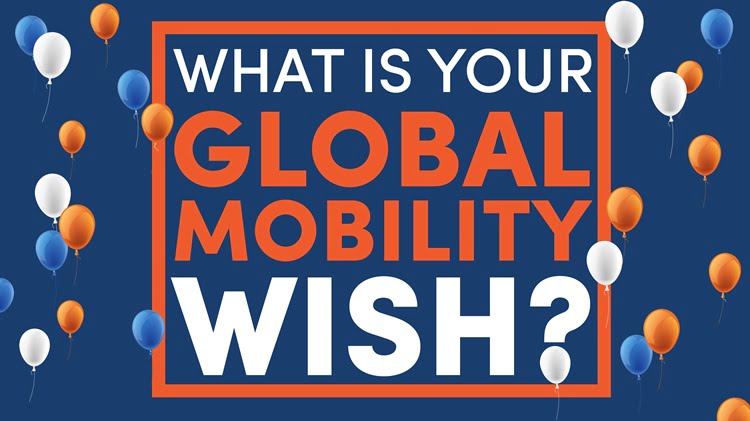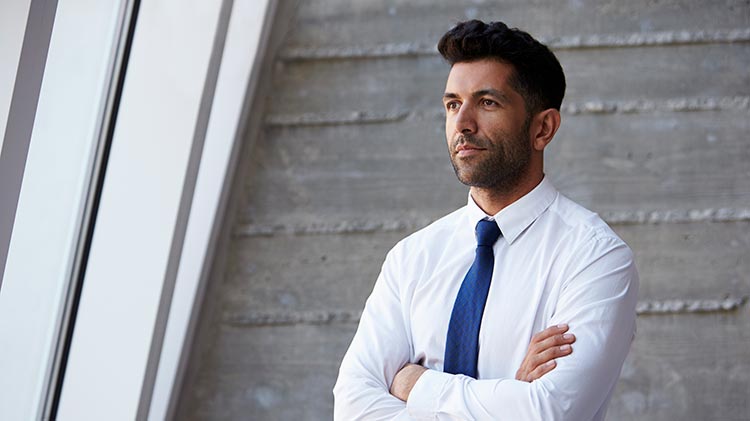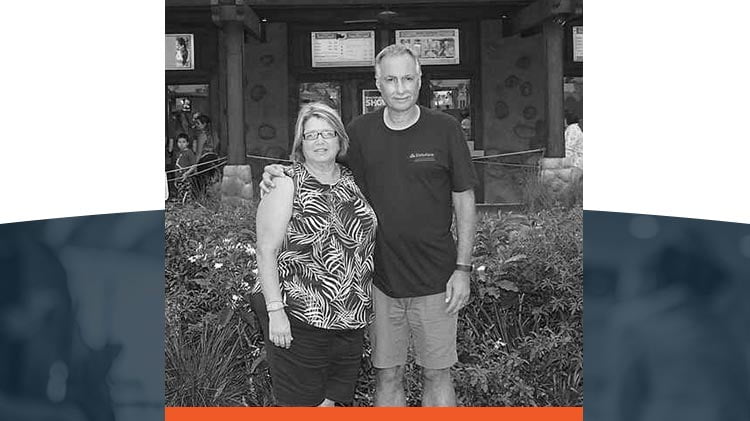Discover and Share
Subscribe to Our Newsletter
SUBSCRIBE NOW
This Week’s Feature

Is MicroCoaching Really the Future of Leader Development?
Microcoaching has emerged as an ideal solution for building and boosting your organization’s leadership capability at scale. For decades, organization’s have relied on executive coaching to develop leaders at the top of the org chart…
View By Topic:
Latest Articles
 Leadership Development
Leadership Development How Executive Coaching Benefits Your Organization’s Leaders and Transforms Businesses
Executive coaching benefits company leaders who want to seize business opportunities and overcome organizational challenges such as uncertainty, change, and increasing competition. By providing tailored guidance that builds a deeper awareness of personal and team…
 Outplacement
Outplacement Employee Outplacement: 6 Reasons it Belongs on Your Layoff Checklist
Explore the advantages of promoting employee outplacement services to your departing team members. Employee Outplacement is an Essential Component of Your Layoff Checklist As your organization gears up for layoffs, preparing your layoff checklist and…
 Outplacement
Outplacement How to Transform Corporate Layoff Challenges into Leadership Opportunities
While corporate layoffs can lead to financial savings and a more streamlined workforce, they also pose several potential challenges, including falling engagement among remaining employees, post-layoff turnover, and reputational damage. However, while these issues can…
 Leadership Development
Leadership Development Situational Leadership Theory: The Right Leadership Style at the Right Time
Every employee has unique needs to be led and supported at work. This fundamental principle forms the foundation of situational leadership theory—that employees require different forms of leadership at different points along their employee journey,…
 Leadership Development
Leadership Development 5 Ways Bad Leadership Puts Your Company at Risk
Struggling with low engagement, high turnover, or burnout? In this article we’ll address the root cause: bad leadership. Poor leadership creates a toxic work environment, leading to workplace risks and diminished employee retention. We understand the…
 Leadership Development
Leadership Development Leader Development: New Approach Combines Coaching with Online Learning to Boost Retention
While manager behavior remains a key driver of employee turnover, effective leader development stands out as a powerful remedy. Whether employees are “quiet quitting” or formally resigning, company leaders have the power to boost employee…
 Leadership Development
Leadership Development Is MicroCoaching Really the Future of Leader Development?
Microcoaching has emerged as an ideal solution for building and boosting your organization’s leadership capability at scale. For decades, organization’s have relied on executive coaching to develop leaders at the top of the org chart…
 Leadership Development
Leadership Development 3 Surefire Ways to Sabotage the Development of a Coaching Culture
A thriving coaching culture supports the development of strong leaders and a more engaged workforce. However, using coaching only as a remedial solution or limiting it to specific management levels can undermine your efforts. In…
 Leadership Development
Leadership Development The Manager as Coach: How to Walk the Talk
The “manager as coach” phrase may get tossed about at your organization, but has it really taken hold? Has your leadership really put these words into practice? If so, you may have already begun to…
Leadership Development
 Leadership Development
Leadership Development How Executive Coaching Benefits Your Organization’s Leaders and Transforms Businesses
Executive coaching benefits company leaders who want to seize business opportunities and overcome organizational challenges such as uncertainty, change, and increasing competition. By providing tailored guidance that builds a deeper awareness of personal and team…
 Leadership Development
Leadership Development Situational Leadership Theory: The Right Leadership Style at the Right Time
Every employee has unique needs to be led and supported at work. This fundamental principle forms the foundation of situational leadership theory—that employees require different forms of leadership at different points along their employee journey,…
 Leadership Development
Leadership Development 5 Ways Bad Leadership Puts Your Company at Risk
Struggling with low engagement, high turnover, or burnout? In this article we’ll address the root cause: bad leadership. Poor leadership creates a toxic work environment, leading to workplace risks and diminished employee retention. We understand the…
 Leadership Development
Leadership Development Leader Development: New Approach Combines Coaching with Online Learning to Boost Retention
While manager behavior remains a key driver of employee turnover, effective leader development stands out as a powerful remedy. Whether employees are “quiet quitting” or formally resigning, company leaders have the power to boost employee…
 Leadership Development
Leadership Development Is MicroCoaching Really the Future of Leader Development?
Microcoaching has emerged as an ideal solution for building and boosting your organization’s leadership capability at scale. For decades, organization’s have relied on executive coaching to develop leaders at the top of the org chart…
 Leadership Development
Leadership Development 3 Surefire Ways to Sabotage the Development of a Coaching Culture
A thriving coaching culture supports the development of strong leaders and a more engaged workforce. However, using coaching only as a remedial solution or limiting it to specific management levels can undermine your efforts. In…
 Leadership Development
Leadership Development The Manager as Coach: How to Walk the Talk
The “manager as coach” phrase may get tossed about at your organization, but has it really taken hold? Has your leadership really put these words into practice? If so, you may have already begun to…
 Leadership Development
Leadership Development Managing Remote Workers: Top 5 Manager Mistakes
Despite the prevalence of remote work over the last few years, many managers struggle with the complexities of managing remote workers. Mistakes such as inconsistent communication and micromanagement underscore the need for manager training and…
 Leadership Development
Leadership Development 6 Biggest Frontline Management Mistakes & How to Avoid Them
Frontline management is challenging, requiring a balance between upper management demands and employee needs. Many frontline managers are promoted because they were successful individual contributors, not for their management skills. In fact, according to Capterra…
Job Relocation
 Job Relocation
Job Relocation Your Relocation Package – Time for a Makeover
The traditional relocation package is getting a makeover! That’s because corporations are determined to attract and retain top talent while taking a more inclusive approach. Competing for talent, retaining star performers and attracting talent to…
 Job Relocation
Job Relocation Duty of Care & Relo: What HR Professionals Need to Know
Duty of Care is a legal term that’s been around for decades. As it relates to employment law, duty of care is the responsibility to act with a reasonable standard of care in regard to…
 Job Relocation
Job Relocation 5 Mistakes in Cross-Cultural Competence Training
Experienced expats identify common mistakes in cross-cultural competence training A vital part of success during global relocations is building cross-cultural competence. The positive effects of cross-cultural training on expatriate assignments are numerous – from building…
 Job Relocation
Job Relocation Mobility Feature: Secret to Profitable, Human-Centered Employee Relocation
Relo EQ is the Future of Employee Relocation Success Before the global pandemic put many moves on a temporary hold, employee relocation was evolving faster than ever. That transformative trajectory will likely continue – even…
 Job Relocation
Job Relocation Corporate Relocation: What is Integration?
In the context of a corporate relocation, what is integration? Multiple moving parts make up a job relocation – from home purchasing/selling to immigration/visa assistance to household goods shipping. Outside of these practical relocation assistance…
 Job Relocation
Job Relocation Corporate Relocations: Maximize Success by Focusing on Wellbeing & Integration Services
Corporate relocations, on average, cost $70,000 – $100,000 (U.S.) per employee. And the cost varies considerably whether or not home ownership is involved. How will your company’s investment in relocation pay off? Experts say much…
 Job Relocation
Job Relocation What is Your Global Mobility Wish?
We love our tradeshow time! We use this opportunity to connect (and reconnect) with our relocation community and get a pulse on what friends, partners, and the industry overall are feeling about global mobility. Last…
 Job Relocation
Job Relocation These Talent Mobility Conversations Failing to Happen?
U.S. companies spend 25 billion dollars every year on corporate relocations. If your company is not part of that statistic, it probably should be. And even if you are already investing in relocations, international assignments,…
 Job Relocation
Job Relocation The Global Assignment was a Success. Now What?
Is repatriation an afterthought at your organization? Global assignments provide a wealth of benefits for companies and employees. From gaining exposure to different cultures to increasing business expertise, transferees are primed to deliver long-term results…
Outplacement
 Outplacement
Outplacement Employee Outplacement: 6 Reasons it Belongs on Your Layoff Checklist
Explore the advantages of promoting employee outplacement services to your departing team members. Employee Outplacement is an Essential Component of Your Layoff Checklist As your organization gears up for layoffs, preparing your layoff checklist and…
 Outplacement
Outplacement How to Transform Corporate Layoff Challenges into Leadership Opportunities
While corporate layoffs can lead to financial savings and a more streamlined workforce, they also pose several potential challenges, including falling engagement among remaining employees, post-layoff turnover, and reputational damage. However, while these issues can…
 Outplacement
Outplacement California WARN Law: How It Affects Smaller Employers & Smaller Layoffs
Have you compared the California WARN law with the federal WARN statute? HR professionals should be reminded that each state has its own regulations affecting layoffs. Whether you employ workers in California or not, the…
 Outplacement
Outplacement Layoff Survior Guilt – What to Do About These 4 Common Reactions
What is Layoff Survivor Guilt? Survivor guilt shows up when people who survived trauma are plagued by “an endless loop of counterfactual thoughts that you could have or should have done otherwise, though in fact,…
 Outplacement
Outplacement RIF Layoff: 3 Strategies for Communicating the News
During a RIF layoff, communicating to staff and other audiences is essential. The rationale and the business reasons for the layoffs should be part of your plan. Your audiences will vary, but these groups should…
 Outplacement
Outplacement Offboarding: Know the 4 Value Drivers of Employee Alumni
How do you measure success in offboarding? Savvy companies today approach offboarding in a “strategic, data-driven and flexible way” according to the Harvard Business Journal. “A well-managed offboarding process can turn employees into loyal alumni who…
 Outplacement
Outplacement Where to Begin: 4 Steps to Consider when Making a Layoff
Making the decision to eliminate positions at your company is never easy. Whatever the reason – merging, downsizing, outsourcing – create a strategic plan that addresses your teams’ questions and aligns with your company’s values,…
 Outplacement
Outplacement What is a RIF?
While some layoffs are temporary, a reduction in force (RIF) is a permanent layoff or an elimination of jobs. RIFs are caused by changes in business strategy, budget cuts, or mergers and acquisitions. Each year,…
 Outplacement
Outplacement What are Outplacement Services? A Comprehensive Guide
What are outplacement services, and why do they matter? Even seasoned HR leaders may ask these questions – particularly in today’s competitive and ever-changing job market. In truth, understanding and utilizing outplacement services can be…
Coaching
 Coaching
Coaching How to Become a Business Owner with Coaching
In the US, nearly 625,000 new small businesses open each year.* The Bureau of Labor Statistics reports that 10.1% of Americans are self-employed.** As you explore how to become a business owner, you’ll discover that…
 Coaching
Coaching Visa Holder Leverages Power of Networking: Urpi’s Story
Ask a career coach about networking, and 99 out of 100 will tout its importance. This key job search skill becomes even more critical for visa holders as they navigate restrictions and competition to finding…
 Coaching
Coaching The Right Coach at the Right Time: John’s Story
“The emotional piece was the hardest to deal with,” shares John Michelli, whose 28-year career ended when the insurance agency he worked for underwent a reorganization. “It wasn’t just a job – it was my…
 Coaching
Coaching Strategic LinkedIn Project Gains Attention: David’s Story
LinkedIn’s global scale proves especially helpful for job-seeking professionals moving internationally. David Berna was active on LinkedIn prior to relocating from France to Spain, but the guidance he received from his local relocation/career coach offered…
 Coaching
Coaching Strategic Approach Pays Off for Industry Changer: Nicole’s Story
“We left Minnesota for my husband’s dream job in California,” shares Nicole Tinberg. “I had previously moved to the US from the UK – I thought I had moving down! But the relocation was…
 Coaching
Coaching Results Are Only Half of the Reward
Women in industries such as waste services often find it difficult to gain visibility. Elizabeth Csipkay agrees this was a major challenge for her. With expertise in business development, sales and marketing, Elizabeth has proven…
 Coaching
Coaching Relocation is an Open Book: Morgan’s Story
Relocations are full of adjustments, but one adjustment caught Morgan Talbot off guard: winter. “We left 90 degree weather in California to experience the worst New York winter in over a century. That was difficult!”…
 Coaching
Coaching Data Proves Job Seekers Land 2.67 Times Quicker with Job Search Assistance
One-on-One Career Coaching Changes Everything Job searches are no easy task. Whether the individual is relocating or was downsized, they may not know where to begin. One-on-one coaching can change that and provide job search…
 Coaching
Coaching Inner Artist Emerges After Job Loss: Cynthia’s Story
A Case Study About Finding a New Path After a Job Loss From an early age, Cynthia Brinson took an interest in using her imagination and her hands. “From cooking, sewing, and gardening as a…
Subscribe to Our Newsletter
SUBSCRIBE NOW


